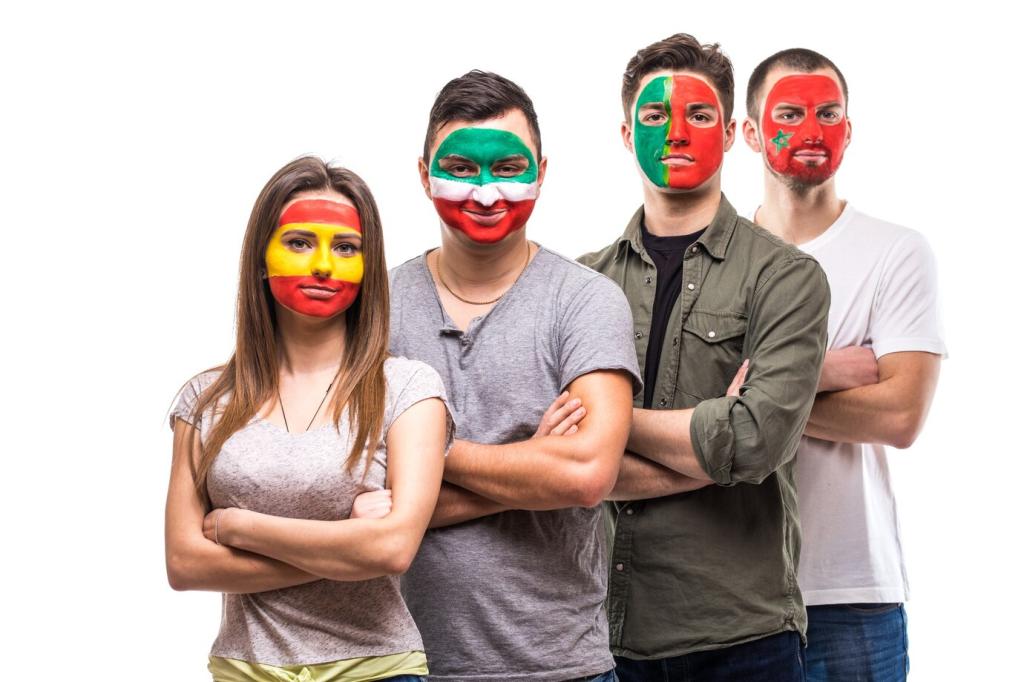Chosen theme: The Role of Dance in Spiritual Ceremonies. Step into a world where movement becomes prayer, rhythm becomes breath, and bodies become living altars. Explore histories, emotions, and community practices—and share your reflections or subscribe to journey deeper with us.
Ancient Footsteps: Origins and Meanings
Archaeologists have found cave art suggesting rhythmic gatherings, with figures frozen mid-gesture beside drums and fire rings. Across continents, ceremonial movement forged communal courage, invited rain, honored ancestors, and stitched stories into muscle memory. What ancestral steps live quietly within you today?


Ancient Footsteps: Origins and Meanings
Circular formations echo sun, moon, and seasons, while stamping patterns affirm presence upon the earth. Raised arms can offer gratitude; grounded hips can call stability. These gestures compose a symbolic language where every turn petitions, praises, or protects. Share your favorite symbolic step and why it resonates.
Body as Sacred Instrument
Breath, Rhythm, Presence
Breath steadies the pulse as feet answer drumbeats, aligning personal cadence with communal timing. Many dancers describe a softening of self-consciousness as attention roots into breath and bone. Try a minute of slow breathing before moving, then comment on how it alters your experience.


Polyrhythms as Pathways
Layered drumming can anchor attention beyond ordinary chatter, guiding groups into a shared state of heightened presence. West African and diasporic traditions illustrate how interlocking rhythms create spaciousness inside intensity. What rhythms settle your thoughts? Share a track that helps you listen with your whole body.
Chant, Drone, Silence
Sustained tones, collective chants, and intentional pauses form bridges between effort and surrender. In some practices, the quiet between beats becomes a threshold where meaning gathers. Try moving to a single steady tone, then pause completely. Describe what emerges in the silence after motion.
Modern Soundscapes, Ancient Intent
Contemporary practitioners sometimes weave electronic textures with hand drums, honoring old intentions through new tools. When approached with humility and consent, innovation can support reverence. Do you blend playlists for personal ritual? Share your approach, and subscribe for curated, context-aware sound selections each month.
Community, Identity, and Belonging
Hand-in-hand line dances and community circles remind participants they move with, not against, one another. The circle becomes a vessel for grief, joy, and continuity. Recall a time a group dance made you feel held, then invite a friend to read and reflect with you.
Community, Identity, and Belonging
Rites of passage often employ movement to honor transitions—childhood to adulthood, single to partnered, apprentice to bearer of responsibility. Consider the Maasai adumu jumping or Samoan siva traditions, each framed by community and meaning. Share how your community marks change through movement, publicly or privately.
Community, Identity, and Belonging
Elders and culture bearers safeguard protocols that make ceremonies whole. Learning songs, steps, and stories often requires patience, humility, and service. Support local cultural groups, attend respectfully when invited, and subscribe to our updates highlighting interviews with tradition keepers and ways to assist their work.
Invitation vs. Imitation
Being present at a ceremony, when invited, differs profoundly from copying sacred choreography outside its setting. Ask for guidance, accept boundaries, and understand not everything is for public rehearsal. Comment with questions you have about etiquette, and we will compile an educational guide for subscribers.
Context is Consecration
Regalia, songs, and steps carry responsibilities. Photography or recording may be restricted for good reasons. A traveler once told us a gentle reminder from a host changed their entire approach to witnessing ceremony. Share a moment when context reshaped your understanding of respect and belonging.
Practice Allyship
Support culture bearers, pay fairly for teachings, and learn from accredited instructors. Share resources responsibly and verify permissions. Want a practical checklist for respectful engagement? Subscribe, and we will send a concise, community-reviewed guide with actionable steps for attending or learning without harm.
Personal Practice: Bringing Sacred Dance Home
Light a candle, breathe slowly, choose a rhythm that supports reflection, and move with a simple intention—gratitude, release, or courage. Journal afterward about sensations, images, and emotions. Share a sentence from your journal to inspire another reader’s next practice session.
Personal Practice: Bringing Sacred Dance Home
Seek workshops led by tradition holders or certified facilitators who emphasize cultural context and consent. Online classes can help, but vet credentials carefully. Tell us what you hope to learn, and subscribe for a quarterly directory of ethical learning opportunities and reading lists.


